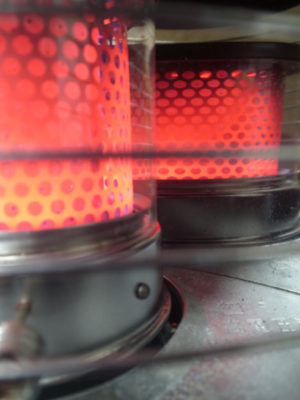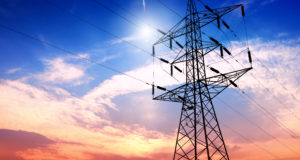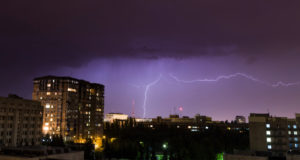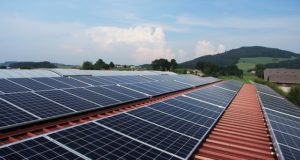
Image source: SacBee.com
Today’s homes are all heated as a requirement of the Universal Building Code. While air conditioning isn’t a regulatory requirement, heating is. The heating must be adequate to maintain the home in the “comfort zone” even in the most-extreme temperatures for that part of the country. There’s only one problem, though: Nearly all home heating systems depend upon electricity to function. When the grid goes down, that expensive hardware doesn’t do us the least bit of good.
Unfortunately, the power grid is the most vulnerable part of our infrastructure. Every severe weather event causes the grid to go down, albeit temporarily. Cyber-attacks have already been committed, showing that the grid can be taken down artificially. Almost anything can cause a power outage.
You’ve probably heard about it yourself. Some city or other has a power outage in the dead of winter and as a result of it, a few people freeze to death. The victims are almost always older people who can’t get out, can’t create heat by alternate methods, and can’t move enough to create enough body heat to keep themselves warm.
The question is, what will you do when the grid goes down where you live? How will you heat your home and take care of your family? Regardless of what type of heating system you have, at an absolute minimum it uses electricity for the control circuits. If you have a forced-air system (like most homes do), you also face the problem of no electricity to run the blower motor.
Don’t think you’re better off if you have a hot-water heating system. These systems still need electricity to run the pump that circulates the water. They won’t work any better in a grid down situation than forced-air systems will.
When that time comes, the best you can probably do is return to the old ways of heating your home. That means a fireplace or wood-burning stove.
Many homes still have fireplaces, although they are more decorative than anything else. Gas fireplaces are purely decorative, but a wood-burning one will produce some heat. A fireplace really isn’t a very efficient heater, as most of the heat goes right up the chimney. To be efficient, some means to capture the heat and distribute it into the room are necessary.
You can buy inserts to put in a fireplace which draw cool air in from the floor and return it to the room as hot air. Essentially, the insert is a series of metal tubes, which surround the fire. These either work by a blower motor or by convection. The best ones for an emergency situation are the ones which work by convection, as you won’t need electricity to run the blower. However, the convection models don’t move as much air as the ones with blowers do.
Benjamin Franklin vastly improved the efficiency of the fireplace by the invention of the Franklin Stove. This is a metal fireplace which allows the fire to be placed closer to the center of the room. The metal stove radiates heat from all sides, as well as from all sides of the metal tube chimney, making it much more efficient than a fireplace.
The wood-burning stove we know of today is a descendant of the Franklin Stove. While it is not usually as complicated, it does have a metal fire box, which is placed away from the wall, allowing heat to radiate from all sides.
The Most Versatile Backup Stove In The World Allows You To Cook Anything, Any Time, Any Where
1. Temporary wood-burning stove
For emergency heat, a wood-burning stove can be installed on a temporary basis. All that is needed is the stove, chimney pipe with an elbow, a piece of plywood and a convenient window. The stove can be placed close to the window and the chimney run out through an opening made in the window by removing one of the glass panes. The extra space in the window can be closed up with plywood.
Modern wood-burning stove chimneys, as well as fireplace chimneys, are triple walled. The smoke travels up the center part of the chimney. The triple walls create two air passages around this central chimney, which are connected at the bottom. Cool air from outside enters the outer passageway, traveling downward. When that cool air reaches the bottom, it is warmed by the fire and travels back up through the second passageway. This ensures that the outer passageway is always cool, preventing the possibility of starting a fire.
If you are using a wood-burning stove for emergencies, you want to be sure that you buy one that uses wood and not wood pellets. The wood pellet ones are more efficient, producing more heat per pound of wood than the others. However, you can’t use them with normal firewood. When you run out of pellets, you freeze.
2. Kerosene heater
 Another very effective option is to use a kerosene heater. I heated my uninsulated attic office for years with a kerosene heater, when I lived in New York. These heaters are relatively clean burning and produce quite a bit of heat. Like the wood-burning stove, they will radiate heat from all sides, allowing you to gain the maximum possible heat out of them. There is no chimney, so the heat isn’t lost out the chimney.
Another very effective option is to use a kerosene heater. I heated my uninsulated attic office for years with a kerosene heater, when I lived in New York. These heaters are relatively clean burning and produce quite a bit of heat. Like the wood-burning stove, they will radiate heat from all sides, allowing you to gain the maximum possible heat out of them. There is no chimney, so the heat isn’t lost out the chimney.
The problem with any of these heating methods, whether using wood or kerosene, is that you have to have an adequate supply of fuel on hand. When your fuel runs out, your heat does as well. Fortunately, both wood and kerosene store well for prolonged periods of time, so you can stockpile fuel without a problem.
3. Gas catalytic heater
There is one other option that I’d like to mention; one that doesn’t require stockpiling fuel. That is of using a natural gas “catalytic” heater. These heaters are highly efficient and burn very clean. They use a ceramic element to provide a bed for the gas to burn in. The burning gas heats the ceramic element, which then radiates heat into the room. These heaters are available in a variety of sizes, intended to be used as room heaters in both small and large rooms.
There are two huge advantages to using this type of heater. First of all, they don’t need electricity, and secondly, you don’t have to stockpile natural gas. Natural gas pumping stations provide their own power, so they will probably still be operating even if there is no electricity. About the only way that they can go down is if the gas pipes are damaged.
Insulating a room
In addition to creating heat, you will also need some way of keeping that heat in the area where you want it to be. During normal times, you heat your whole home. However, in an emergency, you will probably only be able to heat a small portion of your home, perhaps only one room. In that case, you want to be sure that you keep as much of that heat in that room as possible.
The internal walls in a home don’t contain any insulation. Of course, if you are building a home, you could add this as part of your emergency planning. Even without insulation, these walls will help retain the heat somewhat, as a bare wall has some insulation value. Doorways that don’t have doors in them can be covered by blankets, making the blanket into a temporary “door.”
Actually, insulation isn’t the issue as much as holding the heat in the room is. While those may sound the same, in reality they aren’t. You can hold the heat in the room, even without insulation by using heat reflectors.
A “space blanket” or “rescue blanket” made of aluminized Mylar is actually a heat reflector. This material was first invented by NASA for use on the Lunar Excursion Module (LEM) that landed on the moon. While not insulation, this material reflects heat from both sides, doing an amazing job of helping maintain temperature.
For maximum effectiveness, coat the inside of your survival room with this material. You don’t have to do this ahead of time, as you can easily tape or staple the material in place. Don’t forget the ceiling, either. This will help keep the heat you are producing in the room, reducing overall heat requirements and adding to your family’s survivability.
Sign up for Off The Grid News’ weekly email and stay informed about the issues important to you
 Off The Grid News Better Ideas For Off The Grid Living
Off The Grid News Better Ideas For Off The Grid Living




